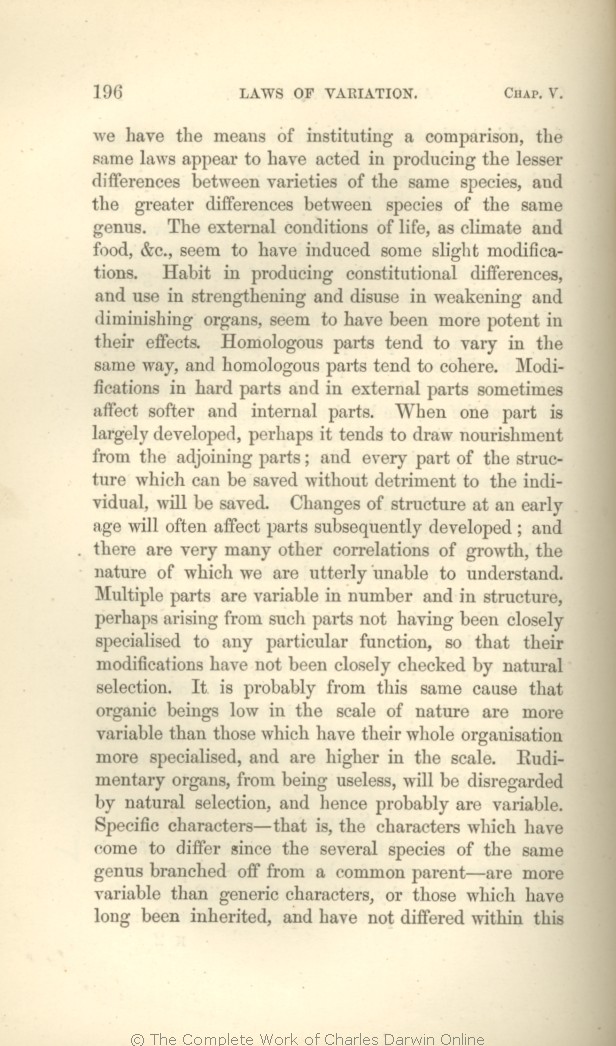we have the means of instituting a comparison, the same laws appear to have acted in producing the lesser differences between varieties of the same species, and the greater differences between species of the same genus. ↑| 1 blocks not present in 1859 1860 1861 1866; present in 1869 1872 | | Changed conditions generally induce mere fluctuating variability, but sometimes they cause direct and definite effects; and these may become strongly marked in the course of time, though we have not sufficient evidence on this head.
|
| differences, 1860 1866 | | dif- ferences, 1859 1861 | | peculiarities 1869 1872 |
| strengthening 1860 1861 1866 1869 1872 | | strengthening, 1859 |
| seem 1859 1860 1861 1866 |
| appear in many cases 1869 1872 |
| more 1859 1860 1861 1866 | more 1869 1872 |
| way, 1859 1860 1861 1866 1869 | | manner, 1872 |
| to the individual, 1859 1860 1861 1866 |
| OMIT 1869 1872 |
| will often 1866 | | will generally 1859 1860 1861 | | may 1869 1872 |
| there are very many other correlations of growth, 1859 1860 1861 1866 |
| many cases of correlated variation, 1869 1872 |
| utterly 1859 1860 1861 1866 | utterly 1869 1872 |
| understand. 1859 1860 1861 1866 |
| understand, undoubtedly occur. 1869 1872 |
| to 1859 1860 1861 1866 | | for 1869 1872 |
| is 1859 1860 1861 1866 | | follows 1869 1872 |
| cause 1859 1860 1861 1866 | | cause, 1869 1872 |
| of nature 1859 1860 1861 1866 | of nature 1869 1872 |
| which 1859 1860 1861 1866 |
| standing higher in the scale, and which 1869 1872 |
| specialised, 1859 1860 1861 1866 | | specialised. 1869 1872 |
| and 1859 1860 1861 1866 | and 1869 1872 |
| are 1859 1860 1861 1866 | are 1869 1872 |
| higher 1859 1860 1861 1866 | higher 1869 1872 |
| in 1859 1860 1861 1866 | in 1869 1872 |
| the 1859 1860 1861 1866 | the 1869 1872 |
| scale. 1859 1860 1861 1866 | scale. 1869 1872 |
| will be disregarded 1859 1860 1861 1866 |
| are not regulated 1869 1872 |
| probably 1859 1860 1861 1866 | probably 1869 1872 |
| characters — 1866 1869 | | characters— 1859 1860 1861 1872 |
| parent — 1866 1869 | | parent— 1859 1860 1861 1872 |
|









